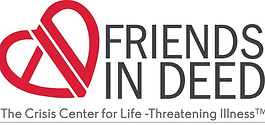
HIV / AIDS
Community Support
Because of government inaction, communities banded together to support people living with HIV/AIDs.
Support lines were developed for people to call. On the first night of a hotline set up by Gay Men’s Health Crisis volunteer Roger McFarlane, he receives over 100 calls from worried queer men. With expanding hotlines, these numbers grew to thousands.
Debra Fraser-Howze founded the National Black Leadership Commission on AIDS to educate and empower black leaders to fight HIV/AIDS and other health troubles in their communities.
Lesbians also played a huge role in the fight for HIV/AIDS awareness. As a result of the virus, HIV patients often grew anemic and needed frequent blood transfusions. Queer men were barred from donating blood. Groups such as the San Diego Blood Sisters held blood drives to send blood to HIV/AIDS patients. Movements such as these blood drives are often seen as to why lesbians are seen as the community caretakers. Because of the vital role they played, the letter ‘L’ was placed in front of the LGBTQ+ acronym for the queer community.

Photo of the San Diego Blood Sisters

Photo of Debra Fraser-Howze
The AIDS Memorial Quilt
One of the most notable contributions was the implementation of the AIDS Memorial Quilt.
The quilt was conceived in 1985 by activist Cleve Jones. After learning of the number of lives lost to AIDS, he took it into his hands to honor them. When organizing a march, he asked the attendees to write down the names of lives lost to AIDS on notecards and tape them to the walls of the San Francisco Federal Building. The cards looked like a patchwork quilt. In honor of this, Jones created the first panel, honoring his friend Marvin Feldman.
The response to the quilt was immediate. People from cities that were heavily affected by AIDS sent panels to Jones and the NAMES Project Foundation. Donors supplied sewing materials and equipment to continue the project.
Each quilt panel is 3 x 6’, the average dimensions of a grave plot. Today, the quilt consists of roughly 50,000 panels, dedicated to more than 110,000 people. Each year, it tours schools, universities, places of worship, and community centers to educate people and ensure the legacy of the lives lost.

Photo of Cleve Jones

Photo of people looking at the AIDS Memorial Quilt
AIDS Memorial Quilt:
UW-La Crosse Connection
During April 27-30 1995, around 130 panels of the AIDS Memorial Quilt were on display in the Mitchell Hall Fieldhouse. During this time, visitors could walk between the quilt panels and honor the lives lost to AIDS. More than 700 "volunteers of love" signed up to help coordinate this display. Various readers recited the names of people who were honored through the quilt.
27 years later, select panels of the quilt returned to the UW-La Crosse campus, and resided in the UWL Art Gallery as a part of ArtsFest 2023. The theme of the program was titled "A Beautiful Remedy for Today" and centered around the role art has in healing. The Art Gallery worked with National AIDS Memorial to feature panels memorializing friends and loved ones from the region who were lost to AIDS.

Photo of the AIDS Memorial Quilt on display in the UW-La Crosse Mitchell Hall Fieldhouse (1995)

Photo of logo for ArtsFest 20223
HIV/AIDS and the Theater Community
The AIDS crisis greatly impacted the theater community.
Stage managers recall coming into rehearsals and performers who were present the night before had gone.
Beginning in 1987, organizations such as Equity Fights AIDS and Broadway Cares provided those living with HIV/AIDS with health care, meals, mental health hotlines, and more.
Playwrights created an entire sub-genre composed of plays about AIDS. This can be seen throughout history as a response to catastrophe. Plays such as Larry Kramer’s The Normal Heart, William M. Hoffman’s As Is, and Jonathan Larson’s RENT amplified the outrage with the political inaction while focusing on the resilience and vulnerability of people living with HIV.

Larson and the AIDS Crisis
Larson's world shifted when his childhood best friend, Matthew O'Grady tested positive for HIV. Larson helped him all the way through his recovery.
Unfortunately, many of Larson’s other friends died within years and even months of each other. He realized that his work gave folks a platform to talk about what needed to be done.
Cynthia O’Neal founded a support group for people with AIDS called Friends in Deed. O’Grady took Larson to some of the meetings, and eventually, he started volunteering there. One night, Larson was sitting in a meeting when a young man raised his hand and said, “I am not really afraid of dying, and I think I can handle suffering. The thing I think about all the time is ‘Will I lose my dignity?’”. This became the basis for a song in RENT titled, "Will I".

Photo of Matthew O'Grady and Jonathan Larson

Friends in Deed logo